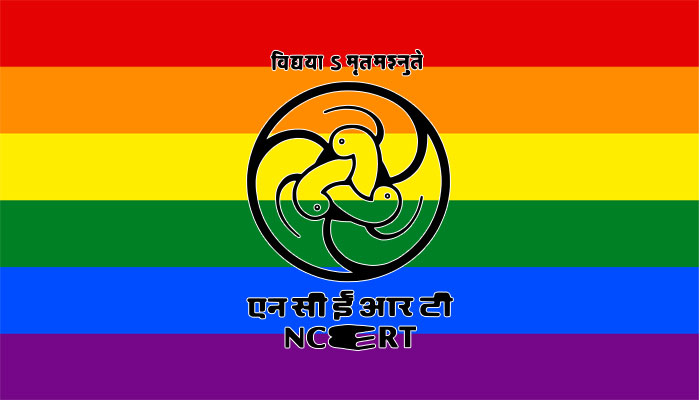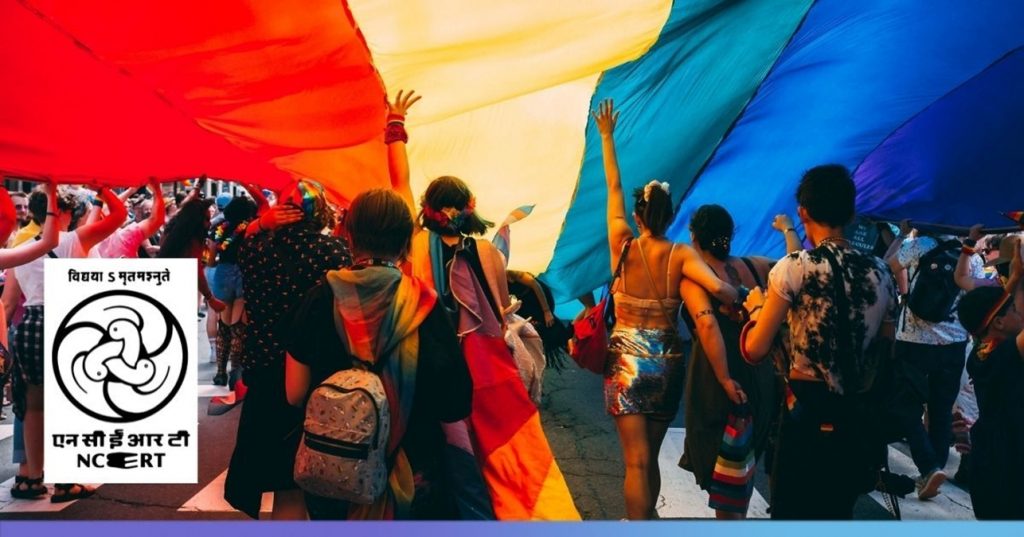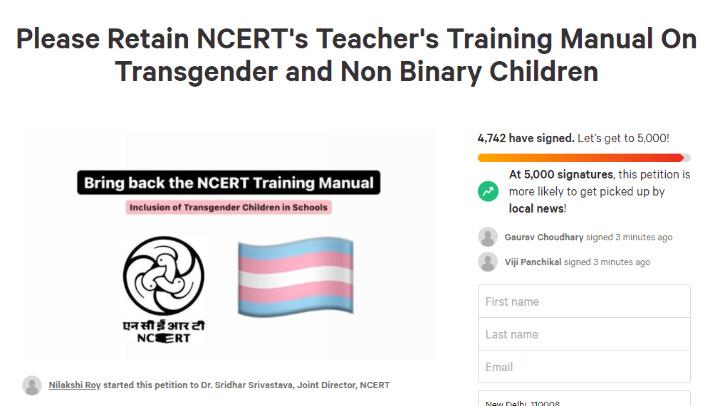The Road Not Taken: NCERT Inclusivity Manual
In Indian schools and institutions, the meaning of ‘inclusiveness’ often gets lost as a principle and value the schools wish to abide by. However, in practice, schools often become the epicenter of discrimination and prejudices in action towards pliable juveniles that often scar them for life.
We often complain of how backward and orthodox the leading institutions of our country are; how our country needs to keep up with times so we can execute a mass exodus from the times where everyone is not treated equally. However, what we witnessed recently was rather revolutionary.
NCERT’s Department of Gender Studies came up with training material for school teachers and stakeholders to make school education more inclusive for gender non-conforming children. The training manual was created with inputs from transgender scholars, professionals, and activists, including Bittu Kaveri Rajaraman-Kondaiah, Associate Professor of Biology and Psychology at Ashoka University; Priya Babu, and Vikramaditya Sahai, Associate at Centre for Law and Policy Research (CLPR) in Bengaluru. Made with the help of esteemed scholars, the manual discussed the plight of gender non-conforming and non-binary students and proposed roadmaps for their better inclusion.

What is the manual about?
The manual released by NCERT was 115 pages and targeted teachers and institution heads. It was designed for sensitizing educators regarding the different aspects of gender diversity with special emphasis on transgenders and gender non-conforming students. It was a manual meant for advocating their integration into schools and providing them with a safe and inclusive learning environment. The manual talked about internalization of gender norms by teachers and educators which may reinforce gender stereotyping and negatively impact these pupils.
Interestingly, NCERT also cited the NALSA judgment passed by the honorable Supreme Court, according to which self-determined gender identity was declared as a fundamental right. This judgment directed the government to make provisions for the education, health, and employment of transgender persons for their better integration into society. NCERT also mentioned other relevant judgments, laws, and policies to better advocate for trans rights. Furthermore, the manual also touched upon Vedic texts and how they talked about acceptance of gender expressions outside of the binary.
NCERT provided definitions of relevant terminologies like gender, cisgender, gender fluid, homosexuality, asexual, etc to spread awareness. Taking into account the diverse cultures of India, it also elaborated on regional identities in India relevant to contexts such as Hijra, Kothi, and Babubhai. NCERT’s department of gender studies worked strenuously to provide elaborate details on landmark judgments, statistical data, socio-cultural problems, cyber crimes, psychological and behavioral effects of gender dysphoria, as well as relevant suggestions. Suggestions that garnered attention included battling the binary structures by introducing a third washroom for gender non-conforming individuals, forming support groups and alliances, sensitisation and training of educators and employed personnel, curriculum reforms, implanting CCTVs and helpline numbers, etc.
NCERT made the manual extremely engaging and interactive by adding activity boxes to test the understanding of students regarding the content. For example, one such activity included putting traits such as “physically strong,” “emotional,” “don’t cry” in categories of girls, boys, both, none of them, all of them, and transgender persons. Moreover, it recommended additions to exist syllabus to make it more inclusive, such as the addition of images of successful trans-women in the subtopic ‘Productive Human Resource’ in Class IX Economics Textbook. Manual suggested including success stories of transgender persons to further sensitize teachers. These are just some of the many details that have been produced by NCERT in an effort of achieving an equal, just, and inclusive educational realm.

How did the public take it?
The public had a mixed bag of responses, as anticipated. While some hailed the NCERT for taking a step as radical as they did, a large number of people revolted against NCERT for a rather progressive manual. For example, the Legal Rights Observatory alleged the manual has been “drafted by intellectually bankrupt leftist elements capable of traumatizing students”. Taking things to a political stand, they also alleged NCERT of appointing apparent CAA protestors for writing this manual.
“There is respect for LGBTQ individuals in Indian society. But when nature has given you certain genders, trying to convince students that they might not be the same gender to which they are born is just tampering and interfering with the natural process,” Mr. Joshi, a former Rashtriya Swayamsevak Sangh (RSS) pracharak told The Hindu. It personally feels like the whole issue has made national headlines because of the same old differences in opinion. It has become a fight between trans allies and anti-trans individuals about the whole concept of gender dysmorphia and gender incongruence. A few people have also made claims about the ‘frail Hindu ego’, claiming that the mention of Vedic texts has been construed as a direct impact on Hindu and hence evoked such a response.
Some people have sought clarity from NCERT about more technical suggestions and terms in the manual. The suggestion of discussion of the use of ‘puberty blockers’ by teachers with students has some questions. Is a teacher capable enough of discussing the so-mentioned puberty blockers? Should a teacher be suggesting such alternatives to students and their parents? These are only a few of the questions raised by the readers. It’s important to note that NCERT has mentioned puberty blockers only twice in this manual, once while speaking of GAHT (Gender Affirming Hormonal Therapies) as a possible solution for gender dysmorphia and once it’s annexure.
Another concern raised by the public was that the feasibility of having gender-neutral washrooms in India. Given the number of cases of sexual assault and the POCSO cases, the safety of young children has become a point of contention. Is a radical and westernized move like this one worth risking the safety of our children for? This concern not only raises an imperative issue of child abuse and assault but also questions whether our countries schools can provide a safe space for these radical moves to thrive in.

What's the aftermath?
Post a social media outrage, an individual has even filed an FIR against NCERT to the National Commission for Protection of Child Rights (NCPCR). The organization has asked NCERT to file a reply in a time of 7 days and has allegedly asked NCERT to “take appropriate action in rectifying the anomalies present in the document,” without mentioning what the said anomalies are. As a result of the outrage, NCERT has taken the manual down from its Website, claiming it to be a ‘rough draft’ that was leaked or accidentally put up.
On the other hand, activists in many states have reportedly reached out to NCERT and governmental authorities to applaud NCERT for their progressive thinking. A few parents have also expressed their support towards this manual. A certain parent of a queer kid has even formed a change.org petition, requesting NCERT to retain the manual.

What do we think?
In the year 2020, only 19 and six transgender students had registered in the 10th and 12th examinations conducted by the Central Board of Secondary Education (CBSE). This sad reality was one of the many reasons that NCERT advocated for creating a transgender-friendly school environment. We have all waited for institutions of our country to become more inclusive of the diverse types of people with diverse experiences and identities. We have all waited for our country to live up to its label of being secular and inclusive. However, the backlash faced by this manual just proves that we happen to live in a country where people feel threatened by experiences, identities, and viewpoints that they do not understand.
However, is the backlash faced by NCERT deeper than what meets the eye? Is creating an inclusive, trans-friendly educational setting a logistical impossibility? A former volunteer at Pratisandhi and a trans woman, Subhi had the following to say when asked about the issue: “If the manual would have been retained, the effects could have been positive. Children would have been made accustomed to realities usually kept at bay. But then, I do heed to the concern raised by the authorities, that it would have created a discrepancy – the school space and the domestic space need not be in sync with each other. But the absence of substantiating focus on parent and educator training is a limitation if the future is considered.”
When asked about her views on the manual being taken down and the implications it could have, Subhi stated, “Schools of today’s India are developing their educational curriculum and co-curricular modules. Within this framework, the introduction of the manual is a challenge, precisely because of the lack of root training. A systematic approach – beginning from teachers, parents, then to students – could have been better. Secondly, gender identities have always been in a tussle within the school. It is a space for grooming. Thus, the challenge of inclusion of ‘once excluded’ identities would seem like a huddle to the on-going education – more so, because of the opinions which can spoil the picture.”
Following Subhi’s contributions, I can’t help but wonder if NCERT’s training manual is the dream of a more progressive India, one that today’s India cannot accept just yet. While the roadmap proposed by NCERT seems ideal at first glance, there need to be grassroots changes and sensitization; one that perhaps begins from familial discourse instead of classroom-based discussions. While NCERT’s efforts for inclusion are indeed commendable, the question that remains is whether India is really ready for a change of this momentum.
Cover Illustration: Alfia
Author

